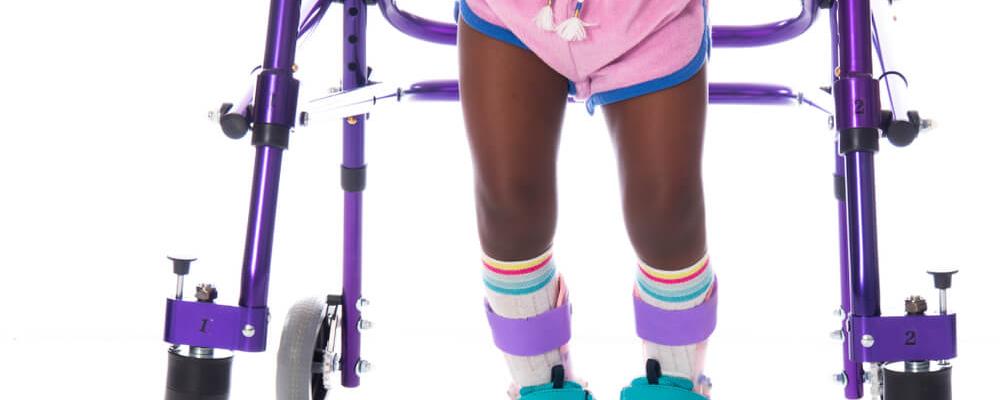
- Home
- Research
- Find research
- Autism and ADHD in children with cerebral palsy
Autism and ADHD in children with cerebral palsy
Magnus Påhlman describes his research on autism och ADHD in children with cerebral palsy

This month we are talking to Magnus Påhlman. He is a paediatrician and child neurologist at the Regional Habilitation Centre at Queen Silvia Children’s Hospital, as well as a PhD student at the GNC. His research focuses on neuropsychiatric disorders, primarily autism and ADHD, in children with cerebral palsy.
Tell us about the background of your research.
I have worked with physically disabled children for many years, primarily children with cerebral palsy. They come to the Regional Habilitation Centre for examination, treatment and training. Many suffer from other impairments as well, to the point that their physical disability – as severe as it may be – is not their greatest hindrance in everyday life. We need to map out every child’s strengths and weaknesses in order to provide the best possible support.
What is cerebral palsy?
Cerebral palsy, abbreviated CP, is an umbrella term for various physical disabilities brought on by brain damage before 2 years of age. There are many different causes of CP and the disorder ranges from mild with almost no loss of mobility, to severe with highly limited mobility. CP is a clinical diagnosis and the most common cause of physical disability among children, affecting around 2 in 1000. Other impairments are also common, e.g. vision impairment, hearing loss, communication disorder, low intelligence (including intellectual disability) and epilepsy.
What exactly is it that you study in your research?
I am examining the prevalence of autism and ADHD as well as other developmental disorders among people with CP. Western Sweden has a registry for all people with CP born since the 1950’s. This provides an incredible opportunity to perform population-based studies on CP, and this serves as the basis of my research project. We are studying which disorders the children have in their school years (from the age of 10) compared with when they were in preschool (ages 4-7). We have also asked all parents to fill out comprehensive screening questionnaires in order to actively look for any indications of autism and ADHD.
How common are other disorders among people with CP?
We found that three quarters of those examined had some other diagnosed disorder by the time they were 10 or older. Intellectual disability and speech difficulties each affected just over half the children, while four out of ten suffered from epilepsy. Many children had several disorders, and the likelihood of having other disorders increased in proportion to the severity of the physical disability.
How common are autism and ADHD specifically among people with CP?
6% of the preschool group had been diagnosed with ADHD and 9% with autism. At ages 10 and up, those numbers had increased to 21% for ADHD and 18% for autism – four and ten times more common, respectively, than in the population at large. People with mild physical disability were more likely to have autism and/or ADHD whereas those with severe physical disability were more likely to have intellectual disability and epilepsy. Studies tend to show that both intellectual disability and epilepsy have a strong overlap with autism, which makes the results of our study quite surprising. One possible explanation is that autism and ADHD – in spite of their high prevalence – could be underdiagnosed among people with CP.
Is that why you keep referring to diagnosed autism and diagnosed ADHD?
Yes, I know from experience that it can be hard to diagnose autism and ADHD in children with other disorders. The child’s abnormal behaviour might also be attributed to their physical disability or other previously diagnosed difficulties. That is why we actively tried to find out how common signs of autism and/or ADHD were in our population-based group of children with CP, and asked parents of all the children in the group to fill out a screening questionnaire aimed at children both with and without intellectual disability. Thankfully, 88% of the parents responded.
What were the results of the screening?
We found that positive screenings were about twice as common as actual ADHD and autism diagnoses. 35% screened positive for autism (compared to 18% diagnosed with autism) and 50% screened positive for ADHD (compared to 21% diagnosed with ADHD). Many children screened positive for both autism and ADHD; all in all, 56% of the children showed signs of autism and/or ADHD. The screening showed a different pattern than the one found among previously established diagnoses. Signs of autism and ADHD were both correlated with epilepsy and more likely among those with higher degrees of intellectual disability.
Given these results, where do you go from here?
We have contacted the parents of the children whose screenings did not “align” with previously established diagnoses and asked to see them for further assessment. We would like to examine whether the children’s difficulties are serious enough to meet the criteria for diagnosis of autism and/or ADHD. This is what we are doing right now.
What kind of impact might this have?
I believe both the children and the families benefit greatly from having all impairments and diagnoses (for which criteria are met) be identified as early as possible. Understanding the child’s difficulties is the first step towards providing proper support, and reduces the risk of misdirected intervention efforts. Moreover, this may ultimately lead to improved function and health, as well as increase the likelihood that the child will become a productive member of society. For parents, early and effective intervention measures can hopefully help to minimise personal concerns and make it easier to handle some of the child’s more severe behavioural problems. At a societal level, we need to understand the full scope of neuropsychiatric difficulties in CP, so that support institutions like habilitation services can allocate their resources in a way that meets people’s needs optimally.
When it comes to developmental abnormalities, the reality is rarely “either/or” but rather “both at once”. After all, that is what ESSENCE (Early Symptomatic Syndromes Eliciting Neurodevelopmental Clinical Examinations) is all about.